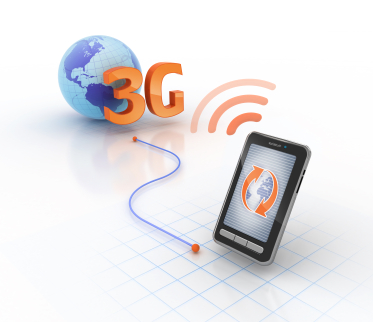 By the time a product or standard reaches its third version you expect it to be reasonably robust and reliable. With mobile communications, it’s taken until the evolution of 3G to reach that point. But what is this thing we call 3G? It turns out that 3G, or 3rd generation, communications networks aren’t just a single homogeneous standard. 3G is a more nebulous term that covers a bunch of different standards.
By the time a product or standard reaches its third version you expect it to be reasonably robust and reliable. With mobile communications, it’s taken until the evolution of 3G to reach that point. But what is this thing we call 3G? It turns out that 3G, or 3rd generation, communications networks aren’t just a single homogeneous standard. 3G is a more nebulous term that covers a bunch of different standards.
The first 3G network was started up in 2001 in Japan. It’s no surprise that with Japanese people embracing mobile gadgets so passionately that they were the first to receive real portable connectivity. It wasn’t long until the rest of the world caught on and by the middle of the decade 3G networks were established all over the world.
When 3G networks were being first established, they were really extensions of the existing mobile phone networks. EDGE evolved from the older GSM comms standards. This provided an upgrade path for network operators wanting to extract more revenue from their systems without having to make a massive investment.
Of course, EDGE wasn’t good enough (in mobile communications, we always want the faster, next generation!) so W-CDMA came along. This evolved further in to the more recent HSPA (which is really the family name of HSDPA and HSUPA).
In Australia, the mobile phone scene can be a bit confusing. Telstra’s NextG network operates on the 850MHz and 2100MHz frequencies. Optus and Vodafone, on the other hand, uses the 2100MHz frequency band and have recently both rolled out the 900MHz band for Australians outside of capital cities. Three’s also running a 2100MHz network, which was built as a joint venture with Telstra prior to their 850MHz network, but with the merger with Vodafone to form VHA there will likely be some consolidation of network assets. All networks run a 2G GSM network as a fallback for customers.
While these standards were being sorted out, consumers didn’t want to wait so handsets that wirelessly delivered data started to hit the market. In 2002, the first Nokia 3G phone, the 6650 was released although by then several different 3G handsets were on the market in Japan.
While 3G capable phones were a great invention, in their own right they weren’t really all that important. What made the phones valuable was how they enabled so many other things that we now take for granted. By connecting our phones to our notebooks, the mobile phone became a modem, allowing us to stay in touch family, friends and work wherever there’s a mobile phone signal.